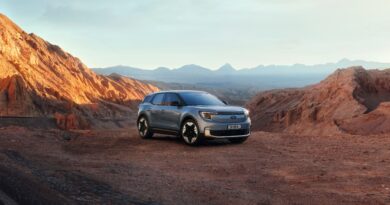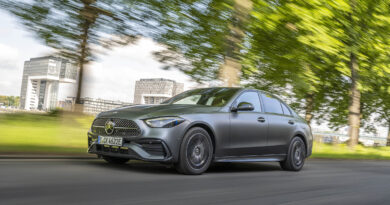2025 MG HS Super Hybrid Essence Long Term Review #2: Can a PHEV actually drive more than 1000km on a single charge and tank of fuel? Only one way to find out…
It’s often claimed that the ultimate range of a petrol-electric plug-in hybrid – if you exhaust the battery and drain the fuel tank – is beyond 1000km.
It’s all about erasing range anxiety concerns rather than being a practical everyday feature of PHEVs. If you want to distinguish your powertrain from an electric vehicle then it’s a good way to do it.
MG is no different when it comes to our HS Super Hybrid Essence long term test car.
In fact, it goes further by claiming the powertrain – a 1.5-litre turbo-petrol petrol engine, two e-motors and a 24.7kWh LFP battery pack – is guided by software developed specifically to maximise its performance in Australian conditions.
We’ve asked MG for more info on the system and the software so we can better explain it to you. But for the moment that’s a work in progress.
So let’s go for a drive in our HS long-termer and see if we really can exceed the 1000km threshold. In one day.
The route is a giant loop through the south-east of Victora, incorporating highways, byways and freeways, climbs and descents and even a little bit of gravel. The weather is forecast to be mixed and pretty cold.
So to some ground rules. The entire drive is being conducted as a hybrid in HEV mode. That means the petrol engine and e-motor can work together and apart as the software deems appropriate.
The normal drive mode has been selected and the higher of two brake regeneration modes.
This day does mark a bit of a moment. For the first time since the HS came into our possession it’s visiting a petrol station. We’ve driven more than 1700km in 20 days without having to refuel because we’ve been absolutely meticulous in plugging in the battery and charging it overnight.
According to the distance to empty meter as I leave home it’s still got 342km of range.
But all good things come to an end. Thirty six litres and $75 later, the petrol tank is fuelled to its 55 litre brim with 95 RON.
That’s a 2.1L/100km fuel consumption average!
At the start of our journey the petrol range forecast is at 1047km. Battery power is at 127km, or around 90 per cent. It was 100 per cent at the house, but 10 per cent went missing driving the 10km to the petrol station.
That tallies with our experiences with the HS so far. Its battery pack consistently produces around 100km when in EV Mode. Unlike today, we’ve avoided HEV Mode as much as possible.
Leg 1
After the usual process of switching off intrusive speed, lane and driver monitoring, the opening cruise is fuss-free in cold but dry weather. Grey clouds scud eastward.
The highway is flat and open as we amble past Phillip Island at the designated 103km/h. And we are doing it comfortably and quietly in the MG. It feels surprisingly well resolved once the nannies are shut down.

There are good signs here of detail tuning. Even the minimum adaptive cruise control gap to the car in front is sensible. Often in Chinese cars, you can’t get closer than a yawning chasm.
It’s noticeable as we slow and negotiate downtown Wonthaggi that the powertrain reverts to EV-only at the highest practicable speed.
Appropriately, our opening 100km stage ends at the state coal mine on Wonthaggi’s southern edge. It’s nice to see a solar array set up on what is now a tourist attraction. Traditional generation of electricity versus the new age.
The petrol range estimate has proved wildly optimistic, dropping 186km in 100km. Wow! Clearly, some petrol has been burned feeding the battery, which has dropped only 46km.
0-100km
Petrol range start-finish: 1047km – 861km
Battery range start-finish: 127km – 81km
Fuel consumption: 4.2L/100km
Electricity consumption: 6.9kWh/100km
Speed average: 70km/h
Leg 2
As we cruise along the shoreline from Cape Patterson to Inverloch the white horses spraying off the back of the breakers tease how strong the wind is.
The sun is shining brightly now, so much so the powered cover for the panoramic sunroof is rolled into place and appreciated.
But that wind is blowing no good. Black clouds rear up and suddenly the wipers are working as hard as they can – and somewhat overwhelmed.
Giant wind turbines loom out of the muck, prompting a photo opportunity. They swish quietly and repetitively in the rain, unperturbed by the inclement weather.
We press on as blue sky breaks through once more. The road is slimy and wet. Traction can be a challenge as the front wheels slip and grab accelerating out of a slow turn. It’s notable how much smooth low-speed response the e-motor adds.

Mere minutes later, and after our first short taste of gravel for the day, we’re in sunshine once more on the beach at Walkerville South, looking across to Wilsons Promontory, one of Victoria’s best known tourism spots.
The area around the Prom is not so well know, but it is beautiful and there are many nice spots to visit, everything from wineries to walking tracks. But not today.
Another 100km completed just west of Foster and the range forecast continues to reduce too fast. Our 1000km target is already looking dicey.
100km-200km
Petrol range start-finish: 861km-748km
Battery range start-finish: 81km-24km
Fuel consumption: 4.3L/100km
Electricity consumption: 7.2kWh/100km
Speed average: 67km/h
Leg 3
The rain has headed offshore, but the aftermath is obvious. Streams have sprung up and wash down green paddocks , fill gutters and overflowed onto this narrow country road.
Some of these water crossings are deep enough to send up quite the water splash at slow, investigatory speeds. It’s easy to understand why Gippsland is regularly subject to flooding.
Others are a barely visible sheen and the HS takes an unexpected walk diagonally on one corner. It’s a butt-clenching moment.

A dead wombat lies roadside on its back inflated, with its limbs raised in supplication. Always the same. Roadkill is a common sight today.
A dead LandCruiser is parked in lengthening weeds. No engine, no wheels, no go. Plenty of its brethren are still up and running on the local roads.
There are detail HS driving characteristics starting to emerge as we head past surprisingly sizable Toora. The braking feel is fine up to a point, but when a solid brake is required it an take a moment for the mechanical system to ramp up.
A sudden deceleration on adaptive cruise can be a bit uncouth.
The steering, via the sporty squircle steering wheel, is nicely weighted but distant in its feel. The overall compromise is decent enough.
The coast is reached again at Port Welshpool. I remember visiting here as a kid and being endlessly fascinated by a small dead shark on the beach near the jetty. There’s still a jetty, but no shark.

The battery has now essentially depleted. For the rest of the trip it will only have – according to the meter – a few kilometres/per cent in reserve.
The fuel gauge and actual kilometres completed have pretty much matched on this leg, which finishes east of Yarram.
200km-300km
Petrol range start-finish: 748km-647km
Battery range start-finish: 24km-8km
Fuel consumption: 4.8L/100km
Electricity consumption: 5.4kWh/100km
Speed average: 67km/h
Leg 4
The behaviour of the powertrain is fascinating. The engine really tries to run unobtrusively as a range extender – feeding the battery and therefore the e-motor – as much as possible.
Cruising on a country highway in the 100km/h range it revs at around 1900-2100rpm, all very much unobtrusively in the background.
Then it will suddenly boot up to 2800rpm, looking to replenish the battery. It’s then more obvious, but still in an understated way.
It actively claws back range whenever lift and/or brake is involved. Despite the regen never feeling strong it’s actually doing a very good job. It’s a real scavenger.
A couple of times there are barely discernible stutters when accelerating, but no sign of the complete shutdown encountered the very first day the car was driven.
More annoying is the stick stuck in the left-hand side step that’s noisily dragging on the ground. I remain unconvinced by the need or want for side steps on this vehicle.

A diversion on narrow backroads into the village of Seaspray on the 90 Mile Beach rewards with a soggy spring roll and a can of Coke for a late lunch. Judging by the stooped trees there’s lots of strong westerlies here.
Then it’s on to Sale, the easterly point of our journey and the turn back to the into the wind on the Princes Highway.
There’s no ups and down on these grassy plains, no traffic lights and no chance to regen at a steady 115km/h indicated once the freeway is reached.
For the first time the range indicator really starts to steadily descend. Weirdly, the fuel gauge is presented only in kilometres to empty, not as a segmented indicator. A hunt through the settings in the owner’s manual reveals no ability to change over.
I’d like a gauge as well tbh.
We complete 400km in Rosedale. The rise in fuel consumption average is obvious … to a heady 5.3L/100km.
Ahead of us the sun is starting to sink and there are hours of driving to go yet.
300km-400km
Petrol range start-finish: 647km-485km
Battery range start-finish: 8km-6km
Fuel consumption: 5.3L/100km
Electricity consumption: 4.0kWh/100km
Speed average: 66km/h
This completes part one of our journey. Thanks for reading, we’ll be back with the conclusion next Sunday.
2025 2025 MG HS Super Hybrid Essence specifications
Price: $54,990 drive-away
Basics: PHEV, 5 seats, 5 doors, SUV, FWD
Range: 120km (EV)
Battery capacity: 24.7kWh (23.2kWh usable)
Battery warranty: 10 years/250,000km (7 years/160,000km for commercial use)
Energy consumption: 18kWh/100km (ADR)
Fuel consumption: 0.7L/100Km Combined (ADR)
Powertrain: 1.5-litre 4-cylinder turbo with 135kW/340Nm electric motor, combined outputs 220kW/350Nm
AC charging: 6.6kW, Type 2 plug
DC charging: NA
0-100km/h: 6.8 seconds




